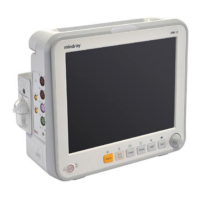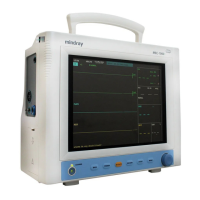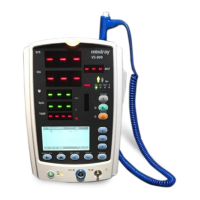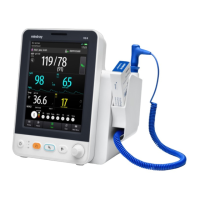3-5
3.4.2 Using Keys
The monitor has three types of keys:
Softkey: A softkey is a graphic key on the screen, giving you fast access to certain
menus or functions. The monitor has three types of softkeys:
Waveform keys: Each waveform area can be seen as a softkey. You can enter a
waveform setup menu by selecting its corresponding waveform area.
Parameter keys: Each parameter area can be seen as a softkey. You can enter a
parameter setup menu by selecting its corresponding parameter area.
QuickKeys: QuickKeys are configurable graphical keys, located at the bottom of
the main screen. For details, refer to the section QuickKeys.
Hardkeys: A hardkey is a physical key on a monitoring device, such as the main menu
hardkey on the monitor’s front.
Pop-Up Keys: Pop-up keys are task-related keys that appear automatically on the
monitor screen when required. For example, the confirm pop-up key appears only when
you need to confirm a change.
3.4.3 Using the Touchscreen
Select screen items by pressing them directly on the patient monitor’s screen.
You can enable or disable touchscreen operations by pressing and holding the [Home]
QuickKey at the lower right corner of the screen for 3 seconds. A red padlock symbol is
displayed if touchscreen operations are disabled.
3.4.4 Using the On-Screen Keyboard
The on-screen keyboard enables you to enter information. Use the [Back] key to delete the
previously entered character. Use the [Caps] to toggle between uppercase and lowercase
letters. Select [Enter] to confirm what you have entered and close the on-screen keyboard.

